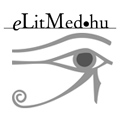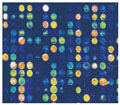The eLitMed.hu medical portal uses computer cookies for convenient operation. Detailed information can be found in the Cookie-policy.
Lege Artis Medicinae - 2003;13(02)
Content
[Human genome project]
[The main goal of the Human Genom Project is to reveal the complete structure of the human DNA, involving the sequence determination of the three billion basepairs. The program was launched in 1990, executed in laboratories of the public sector in several countries. Results of this project are made public on the Internet. In 1998 a private sector company, Celera, was founded with the same goal. In 2001 both projects announced the accomplishment of the first draft of the Human Genome. A whole issue of Nature and Science magazine was devoted to present the first results of their findings. According to the results less than one percent of the genetic information is transcribed to proteins. The estimated number of genes was also lower than expected (30-40 thousand, which number recently increased to 40-60 thousand). Based on these findings, human complexity should be ascribed to the variability of the information units (domains) rather than to the number of genes. Once the complete sequence of the humane genome is accomplished, the ’pre-genomic era’ will be over and the ’post-genomic era’ will begin, dealing with understanding the genetic information, annotating the genes and mapping the genetic variability of people.]
[New molecular based methods for diagnosis, classification and prognosis of leukemias]
[Normal functions of the cell are based on the precise regulation of various genes. If this strict regulation and the hierarchy of genes becomes upset due to some flaws of the system, the result will be cellular dysfunction which may eventually lead to carcinogenic transformation. The two main challenges in the classification of cancers are the discovery of new molecular markers characteristic to defined disease groups and the classification of already diagnosed or new cases into existing groups. This precise classification may open the door to tailored treatment or project the expected outcome of the disease. Today, there is unlimited access available to the databases containing sequences and localisation of the genes within the confines of Human Genome project. It provides significant help for the discovery of chromosome abnormalities and systematic analysis of gene expression patterns. This is important not only to understand normal functions of the cells, but it also contributes to the identification of new genes that are characteristic to given disease groups as markers and that are potential drug targets. Until the second half of the twentieth century the study of the function and regulation of genes was based on step by step investigation of individual genes. The fact that the genomes of an increasing number of organisms have become identified in whole or in part, numerous new techniques have been developed facilitating the systematic analysis of gene functions. The aim of this study is to summarise the new, molecular based possibilities for classification, diagnosis and prognosis of cancers, as well as to summarise the results of these areas, primarily from the point of view of leukemias.]
[Diuretic treatment]
[Diuretics are used almost in all fields of medical practice for treating patients in various conditions associated with or without oedema. They exert their effects through profound alterations in the fluid volumes, ion content of the body and in the osmoregulation. They act mainly on the kidneys but the functions of several other organs are also influenced including the heart and vessels, the lungs, liver and the brain. Summarising our knowledge on the diuretics is justified by the broadened use of these drugs and the differences regarding their site of action, potency, way of administration, dosing and side effects. The special indications for diuretic therapy and combined usage of different diuretics are also reviewed.]
[Urinary diversion - bladder replacement]
[Author gives a review of the surgical procedures, advantages and disadvantages of urinary diversion and bladder replacement techniques. Orthotopic bladder replacement is presented in detail, outlining also the complications. The questions affecting general practitioners, as well as gynaecologists, surgeons and internists are also discussed at length. The different techniques of bladder replacement have become widely accepted in Hungary within the past few years. It is important therefore that all physicians involved in the care of these patients become well acquainted with the possible complications and the changes in the lifestyle of these patients.]
[Evaluation of bone mineral density in renal form of primary hyperparathyroidism]
[INTRODUCTION - The most frequent manifestations of primary hyperparathyroidism are renal stones or calcipenic osteopathy. The aim of authors was to examine how bones are affected (change of bone mineral density and frequency of fractures) in the renal form of primary hyperparathyroidism. METHODS - Mean age of the patients was 57 years (26 -81 years), (4 men, 33 women). Bone mineral density was measured in the lower third of the radius, femoral neck and lumbar 2-4 vertebrae by densitometers. Moreover, occurrence of fractures and biochemical parameters characteristic for hyperparathyroidism (serum parathyroid hormone levels, calcium, phosphorus, alkaline phosphatase, urinary calcium/ creatinine) were examined. RESULTS - Bone mineral density was normal in 6 cases, osteopenic in 10 patients and 21 patients had osteoporosis. Altogether five patients had fractures. Bone mineral density and biochemical parameters were not different in patients with or without fractures. CONCLUSIONS - Bone mineral density decreases in renal form of primary hyperparathyroidism even if there is no bone disease in the clinical picture. Therefore, bone mineral density measurement is advisable for every patient with hyperparathyroidism.]
[Secondary prevention following ischemic stroke - A documentational process audit]
[INTRODUCTION - A previous stroke or a transient ischemic attack is an important risk factor for stroke, therefore measures for secondary prevention have great importance. Based on the results of multicenter randomized controlled trials guidelines for medical and surgical methods for secondary stroke prevention have been established in the last years. In our study - that can be considered a documentational process audit - we analyzed whether there was a change in the past 5 years in the documented recommendations for secondary stroke prevention in the discharge reports of patients with ischemic stroke. PATIENTS AND METHODS - The periods of examination were the first 3 months of 1995 and 2000. We reviewed the discharge reports of all patients discharged from the stroke unit with the diagnosis of ischemic stroke. We tabulated the history, the results of examinations, the condition of the patients at discharge, the stroke subtype, the indications and contraindications for antiplatelet and anticoagulant treatment and of carotid endarterectomy, and the recommended measure for secondary stroke prevention as documented in the discharge report. Data of 205 patients were analyzed. RESULTS - For the majority of patients medical treatment was recommended for secondary prevention. Only 5 patients were candidates for carotid endarterectomy. CONCLUSIONS - The documented practice of secondary stroke prevention significantly improved between 1995 and 2000: the recommendation of internationally accepted guidelines based on the results of randomized controlled trials are reflected better in the discharge reports of patients treated in 2000 (p = 0,0013).]
1.
Clinical Neuroscience
[Headache registry in Szeged: Experiences regarding to migraine patients]2.
Clinical Neuroscience
[The new target population of stroke awareness campaign: Kindergarten students ]3.
Clinical Neuroscience
Is there any difference in mortality rates of atrial fibrillation detected before or after ischemic stroke?4.
Clinical Neuroscience
Factors influencing the level of stigma in Parkinson’s disease in western Turkey5.
Clinical Neuroscience
[The effects of demographic and clinical factors on the severity of poststroke aphasia]1.
2.
Clinical Oncology
[Pancreatic cancer: ESMO Clinical Practice Guideline for diagnosis, treatment and follow-up]3.
Clinical Oncology
[Pharmacovigilance landscape – Lessons from the past and opportunities for future]4.
5.














